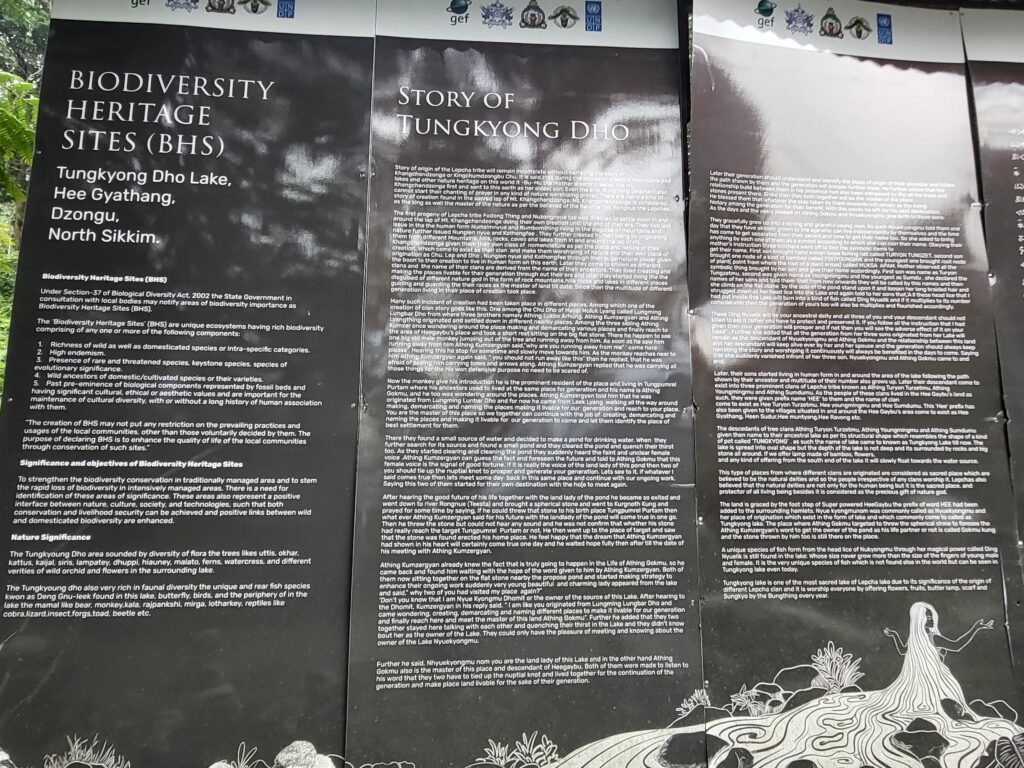Nestled deep within the forests of Dzongu in North Sikkim, Tungkyong Dho is a sacred lake revered by the indigenous Lepcha community. This hidden gem offers not only natural beauty but also a deep connection to local myths and biodiversity.
If you’re into culture and tradition, don’t miss the Namsoong Festival in Dzongu.

Introduction
Tungkyong Dho Lake in Dzongu, North Sikkim, is not just a serene water body. It holds deep spiritual significance for the indigenous Lepcha tribe. This sacred lake is surrounded by rich biodiversity and unique folklore that connects nature, culture, and faith. In this blog, we explore the legendary origins and ecological importance of Tungkyong Dho Lake.
The Origin of Tungkyong Dho Lake – A Lepcha Legend
The Lepcha people believe that the origin of their tribe is closely tied to the mighty Mt. Khangchendzonga. The story of Tungkyong Dho begins with the arrival of two spiritual ancestors, Fodong Thing and Nuzeong Nyu. These divine beings settled around the mountain and began the creation of the Lepcha race.
As they explored the region, they created rivers, lakes, and forests. When they reached the area of present-day Tungkyong Dho, they found a small water source and decided to make it a pond. They cleaned the area and prayed for blessings. The voice of a female spirit from the lake responded to them. This spirit became known as Nyuelyoknyomu, the sacred lady of the lake.
The Message of the Sacred Lake
A wise man named Athing Kumzeryom heard the spirit’s message. She asked him to bring future generations to live near the lake. She believed it would be the perfect place to sustain life and spirituality. Athing Kumzeryom promised to pass down the message. He told his people that Tungkyong Dho would one day be a place of settlement and peace.
Later, their descendants followed the signs and settled near the lake. They respected the wishes of Nyuelyoknyomu and protected the area.
Tungkyong Dho – A Biodiversity Heritage Site
Tungkyong Dho Lake is recognized as a Biodiversity Heritage Site (BHS) by the Government of Sikkim. The lake and its surrounding forests are home to a wide range of flora and fauna. You can find trees like uttis, okhar, katus, and fig. Wild orchids and ferns thrive in the area.
The lake is rich in aquatic life too. It is home to native fish species such as Dang Gnu-Bokf and supports birds like the monal, kaleej, and rajpankshi. Reptiles like lizards and snakes also inhabit the ecosystem.
Why You Should Visit Tungkyong Dho
Tungkyong Dho is more than just a tourist destination. It offers a chance to connect with nature, history, and the spiritual beliefs of the Lepcha tribe. The calm waters and lush greenery provide an experience that’s peaceful and inspiring.
If you’re visiting Dzongu, make sure to include Tungkyong Dho in your travel list. The best time to visit is between March to May and October to November.
Conclusion
Tungkyong Dho Lake is a rare blend of spirituality, natural beauty, and biodiversity. As both a sacred site and a biodiversity hotspot, it reminds us of the deep connection between people and nature. By preserving places like Tungkyong Dho, we honor ancient traditions and protect ecological treasures for future generations.

